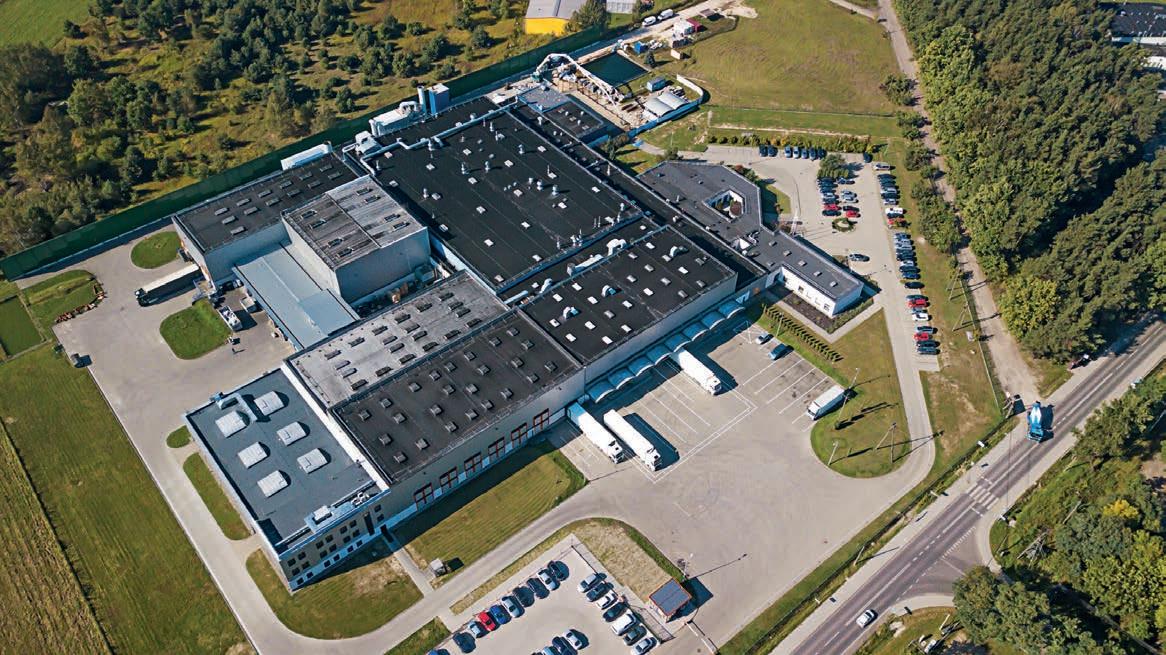
3 minute read
TAKE IT TO THE BANK
Last mile logistics is drawing big global backers.
Investors are taking notice of the last mile logistics race that is seeing businesses do whatever it takes to be the quickest resulting in a hot sector that is finding a lucrative spot in asset funds.
Two recent announcements in the Australian financial sphere have put the spotlight on last mile, not just as an important, fast-growing part of the logistics and transport industries, but as asset funds that are capturing attention worldwide.
Australian property investment manager Centennial recently secured backing from Brookfield, a Canadian multinational asset manager, in order to close a $700 million fund for last mile logistics assets. The fund targets both new acquisitions and redevelopments of properties already held by Centennial.
The Sydney-based company is an independent Australian property investment manager that specialises in industrial and logistics (I&L) assets.
Founded by Jonathan Wolf and Lyle Hammerschlag, it has grown to become one of the leading I&L managers in Australia with this being its third global partnership deal since 2019. Centennial’s I&L portfolio includes a mix of core, value-add and development assets, generally found in key industrial and logistics markets. It has grown its assets to 63 properties in Australia worth more than $1.1 billion, as well as a development pipeline of around $360 million. This latest deal with Brookfield, called
Enhanced Value Partnership (EVP), is expected to allow the company to grow its assets to approximately $3 billion. The Australian company is putting four seed assets into the new fund, recapitalising three distribution centres in Brisbane and Melbourne, as well as an industrial park in Brisbane’s tightly held TradeCoast precinct.
“The partnership’s strategy is based on selecting niche, mid-sized or underperforming assets within urban, supply constrained markets that are generally overlooked by institutional investors due to scale requirements and management intensity,” said Centennial’s Executive Director and CEO, Industrial & Logistics, Paul Ford.
“Underscoring the strong fundamentals for the logistics sector is that Australia has the lowest vacancy rate in the world at just 0.6 per cent. When you add factors such as Australia’s population being expected to grow by 4.2 million by 2032, e-commerce penetration levels and delivery models well below global peers and severe supply constraints, we only see continued outperformance for true last mile, inner ring warehousing and logistics markets.”

Brookfield backing Centennial is just one example that last mile logistics has gone from something that was once comfortably maintained by the postal service, to one of the fastest growing economies in the world.

Last mile logistics is, of course, the final leg of the supply chain, which involves delivering goods from a distribution centre to the customer’s door. With the expansion of e-commerce and online retail comes the need for faster delivery undisclosed investor, bringing its first Last Mile Logistics Fund overall tally to $800 million, evenly split between committed equity and debt. Its fund picks from real estate assets that can be turned into last mile delivery infrastructure.
“We are delighted to reach first close and welcome a major new strategic capital partner for the first last mile logistics unlisted fund,” said HMC Head of Funds Management, Nicholas Harris.
“This is a high conviction strategy which we believe is unique, leverages our track record in this sector, and can be significantly grown in the future through further last-mile logistic fund series.”
Last mile logistics funds typically invest in a variety of assets, including warehouses, distribution centres, and last mile delivery vehicles. They may also invest in technology companies saw a spike in private equity investments in the United States, compared to the previous years.
“The approach is either to seek out mature supply chain tech companies that can be reinvigorated by capital and end-to-end transformation, or to pursue deteriorating companies within supply chain that can be made more efficient through modern technology,” wrote report author, Joanna Choi, adding that storage businesses are one of the largest areas of supply chain-related private equity investment, because the growth of e-commerce is generating incredible demand for warehouses and distribution centres.
“The bet on the growth of online retail is a bet on more and larger fulfilment centres and, by extension, on logistics services related to tracking, inventory management, and last mile fulfilment.” centres, popping up around the country,
Ihad two heavy vehicle owners complain to me in recent weeks about having to engage an engineer. Both vehicles had been modified. According to Section 86 of the Heavy Vehicle National Law (HVNL) a modification must be approved by an accredited vehicle engineer who is appointed by one of the road agencies. The position is called an Approved Vehicle Examiner (AVE). The engineer is required to assess the truck or trailer modification against the technical standard called VSB 6, the Heavy Vehicle Modification Code. A modification is defined in the law as: (a) addition of or removal of a component from the vehicle, or (b) a change to the vehicle from the manufacturer’s specification for that vehicle. Installation of a ‘modification’ that is a manufacturer’s option using original equipment parts does not need an AVE approval.
One heavy vehicle owner complained to me had purchased a route-service bus with the intention of making it into a motor home. At this time he wanted to pull out the passenger seats and install a couple of new twin coach seats. The twin seats have an approval in the ADR system and they came with integral seatbelts. They bolted into the original anchor positions on the bus. The applicable VSB 6 code is K1. The owner’s complaints are that it is hard to get an AVE quickly and the cost is $1200 + GST. The cost is excessive considering










